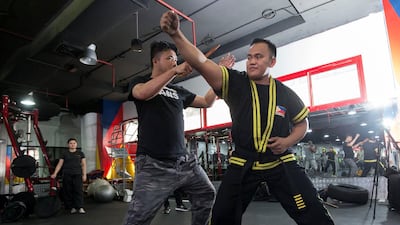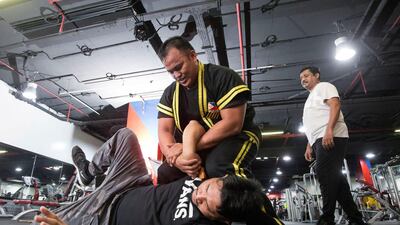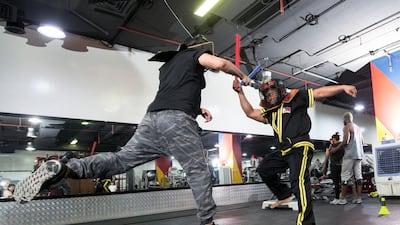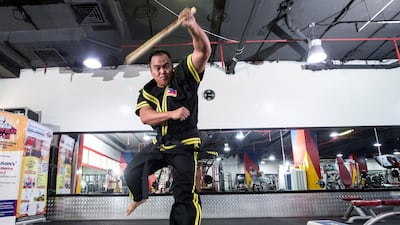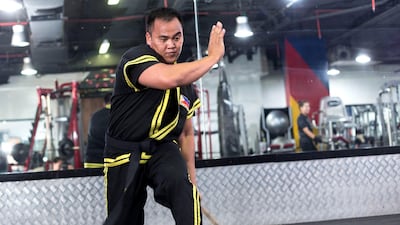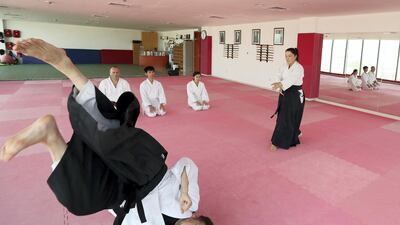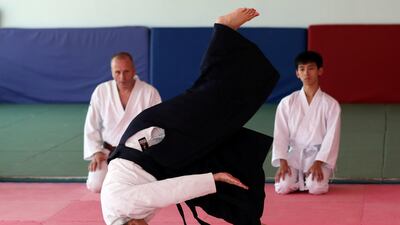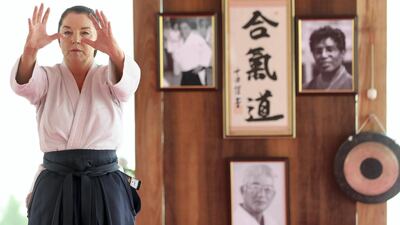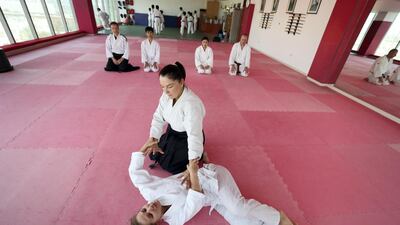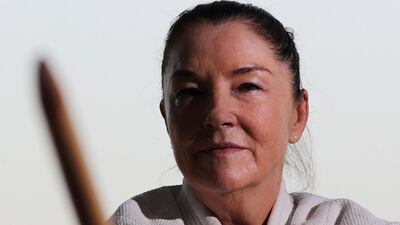Martial arts are increasingly becoming popular in the UAE, from those steeped in history and honour to ultra-violent styles. And class attendance is booming.
Ancient warfare techniques are proving effective in improving child behaviour, relieving stress and arming people with self-defence skills.
The popularity of Mixed Martial Arts (MMA) has boosted demand for classes in Dubai and Abu Dhabi. Ultimate Fighting Championship's star-studded return to Abu Dhabi next month will further fan this interest. MMA star Anderson Silva has performed taekwondo, a fighting style originating in Korea, with devastating effect to become UFC's longest reigning champion.
Master Grant Randall runs the WTTU Moo Duk Taekwondo centre in Dubai International Financial Centre, the UAE’s first full-time training academy.
It is very different to MMA events, where there is goading and trash talk.
"We train all our students in respect, honour and discipline," he tells The National.
“There is no boasting about victory or wallowing in defeat."
Taekwondo comprises kicks – from head-height jabs to spinning heels – "the most devastating kicks of any martial art", Mr Randall says.
“Taekwondo and other Chinese or Japanese martial arts are built on similar foundations of respect and honour.
“Most children in Korea will do taekwondo in some form. It is used by the army there. It is a military martial art, with conditioning of your limbs to be strong enough to kill someone, yet also to be able to look inside yourself to be a better person,” he says.
About 140 people train at Moo Duk, some are as young as three.
Mental strength is central to martial arts.
For an experienced taekwondoin or karateka – practitioners of the art – stronger punching power is related to better control of muscle movement, honed from years of repetitive practice, rather than muscle strength.
Researchers in cognitive neuroscience at Bangor University in Wales found children comprehensive in taekwondo achieved higher grades in maths — and were better behaved.
Make no mistake, taekwondo is tough.
The style’s best exponent display balance and poise of a ballet dancer but with the power and precision of a middleweight boxer.
Experts suffer years of thrashing with bamboo canes and physical contact to deaden nerve endings and strengthen battered limbs.
“The art is 2,000 years old, it is an ancient fighting style used by warriors similar to the Japanese samurai,” says Mr Randall, who also instructs Brazilian Jiu Jitsu at his academy, a style favoured by the UAE military and police. The Briton trained in South Korea under master Kang Sinchul.
“It is important to strengthen our bodies for the kicks, learn how to avoid punches and how to attack," he says.
“We have office workers, mums and professional athletes coming to train with us. Fitness is a huge part of what we do.”
Since becoming a demonstration event at the 1988 Seoul Olympic Games, the sport has evolved to become more like "foot fencing", in which opponents attempt to lightly strike electric sensors within body armour.
It has taken some of the brutality and excitement out of the skill, but is accepted as a sporting discipline. The Fujairah Open in February attracts some of the finest international fighters to compete.
Another fighting style gaining a following in Dubai is Eskrima, also called Arnis or Kali. It is the national sport and martial art of the Philippines and has won attention for its use in Hollywood movies such as The Matrix and the Jason Bourne series.
The technique was introduced by the Spanish in the early 1600s, teaching weapon-based fighting with sticks, knives, bladed weapons and various improvised arms.
It includes hand-to-hand combat, joint locks, grappling and weapon disarming techniques.
Guro Omar, from the Philippines, has been training in Eskrima since 2006. He offers free lessons to domestic workers and other Filipino overseas contract residents in BurJuman.
“I was taught by my grandfather in our village in Leyte Island when I was a boy,” he says.
“You can use any kind of stick for Eskrima, even an umbrella, so it is easy to improvise.”
Campaigns have been launched to have the style added to the Unesco Intangible Cultural Heritage Lists for the Philippines.
“If you focus your training for five hours a day, it is possible to achieve a black belt within a year or so,” says Mr Omar, 36, who has reached the fifth degree of the discipline.
“It is not just with sticks, there are different styles and techniques within Eskrima like buno, a form of wrestling and restraints.
“Eskrima is a complete martial art, as it can be adapted to use any kind of improvised weapon.
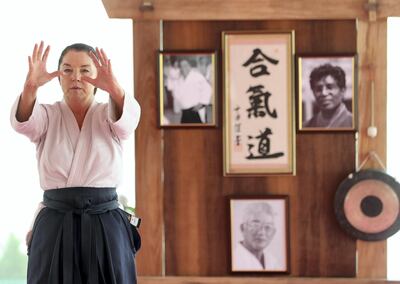
“It is more about self defence than attack, although my country’s soldiers are trained to use this in battle.
“Other countries are copying this technique, and it is being used now in Russia and America.
“We are very proud of Eskrima, and we don’t want to lose it from the Philippines,” says Mr Omar.
Dubai has a multitude of options for anyone wishing to try out martial arts.
From the more spiritual Tai chi or Chinese kung fu, to the Indian self defence style of Kalari, from Kerala, with moves inspired by animals and nature.
Australian Cathy Darnell has been practising aikido, a Japanese martial art for more than 20 years.
As the only female fourth Dan aikido instructor in Dubai, she teaches all ages at the Zanshinkan club at Dubai Karate Cents in Barsha.
“Aikido is one of the youngest martial arts, founded in the early 1900s,” she says.
“The idea of aikido was to have people living in harmony around the world, at peace with themselves, especially during conflict.
“There is no competition in aikido but it is used by police for control and restraint techniques.”
The Zanshinkan is one of the oldest martial arts centres in the UAE and will celebrate its 25th anniversary next year.
Classes are mixed and about half the members are women.
It is a spiritual art, involving training with a bokken (wooden sword), jo (long staff) or tento (wooden knife) and other weapons.
“I’ve found aikido the best way to strengthen my own body and to stay calm and connected,” Ms Darnell says.
“Every martial art has its own beauty, but aikido seems most relevant to the 21st century.”

